
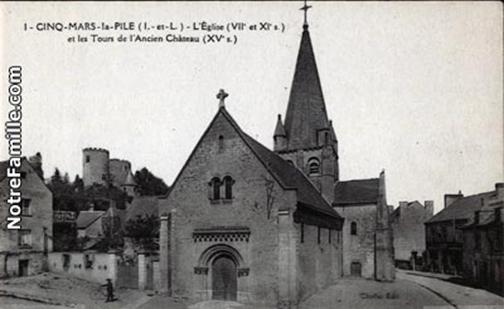
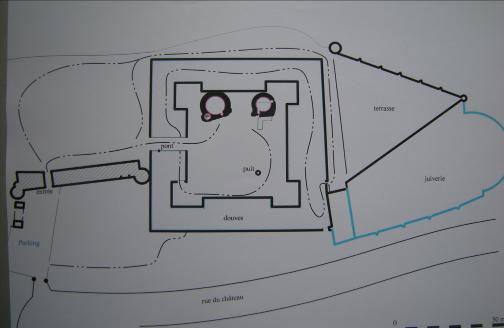
The name Cinq-Mars was made famous by Alfred de Vigny’s novel «Cinq-Mars»which tells the tragic destiny of the Marquis de Cinq-Mars, a favourite of Louis XIII who was beheaded for high treason at the age of 22.
As early as 980, we find the lords of Saint Médard mentioned, to which the church of the village is still dedicated. The name evolved curiously into Cinq-Mars throughout the ages.
The castle is built on a rocky spur, which was a common configuration in medieval times. The round towers that subsist date back to just after the Crusades. There’s no remaining traces of the first Lords’ castle, no doubt because it was constructed out of wood.
At the foot of the spur stands a wall, a first defence, enclosing an area still named the « Juiverie » where a community of Jewish merchants may have lived under the protection of the Lord.
In 1474, Jean de Nerval who owned the lands of Cinq Mars exchanged them for the château de Fougère near Nerval in Brittany. His son, the Commander of François Ier’s army in Italy, enlarged and renovated the moat. The strict triangular design and the « Juiverie »
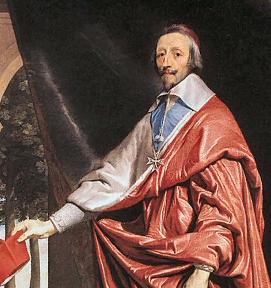
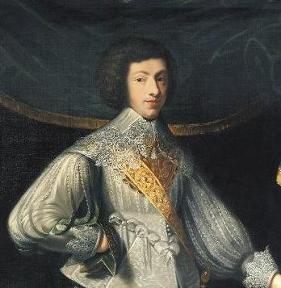
In the 17th century, after the death of the Maréchal d’Effiat (Richelieu’s superintendant of finances), the Cardinal changes Cinq-Mars which belonged to the Maréchal’s wife into a marquisate to give her youngest son Henry a title introducing him into the royal court.
The young man soon becomes the favourite of King Louis XIII.
Famous portraits of the Marquis, painted by the Le Nain brothers show the refinement of the clothing of the King’s grand equerry.
A watercolour by Gainers represents the castle in 1699. However notable errors make us think that his interpretation doesn’t reflect the reality. The Renaissance wing between the two towers while probable at that time, is it accurate?
In the 18th century, a second exchange took place and the Duc de Choiseul bought Cinq-Mars in 1768, and exchanged them with de domain of La Bourdésière which belonged to the Duc de Luynes. The Duc de Luynes had a plan drawn up and ordered the construction of a tower to close up the north wing of the outbuildings above the moat. During the French Revolution, the castle was sold as National Heritage.
During his travels in the Touraine region Delacroix, although he didn’t seem interested in castles, executed a wash drawing evoking the Cinq-Mars castle. Vigny’s novel had just been published.
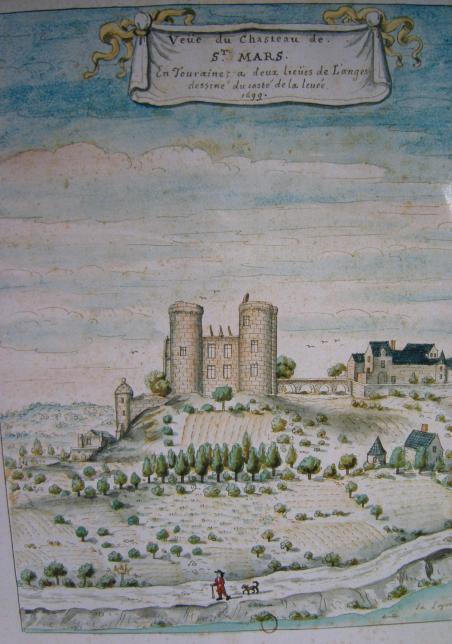
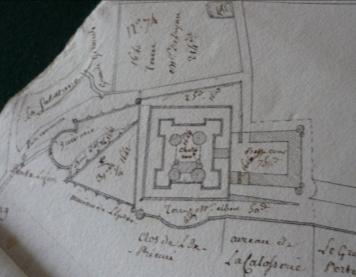
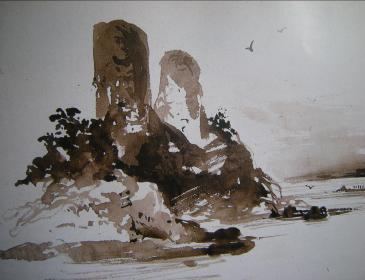
Around 1830 renovation work on the outbuildings were undertaken which raised the roofs on the northern wing and the entry porch was walled. Then in 1860, the other two wings of the outbuildings were demolished and the owner, Louis Bussienne, gardener, created the romantic park.
In 1957, the painter Nicolas Untersteller, director of the l’Ecole Nationale des Beaux Arts, bought the Château de Cinq-Mars, and proceeds to renovate the outbuildings and creates a two-story atelier. He notably reopens the old porch, in front of which a large bay-window today illuminates the dining room.